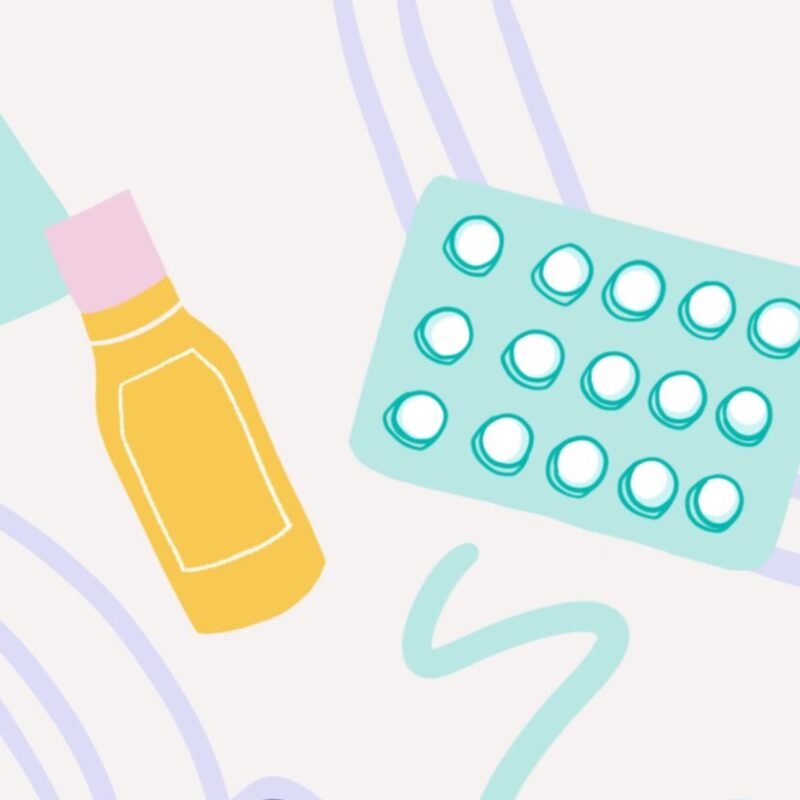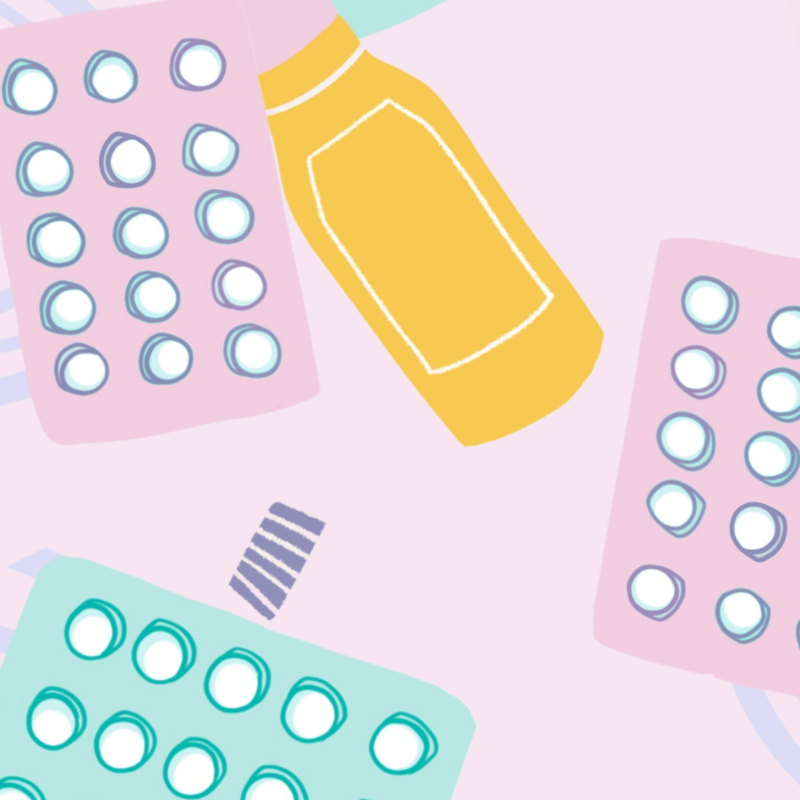Hormone Replacement Therapy (HRT) – The basics Factsheet
The most effective way to treat symptoms of the perimenopause and menopause is to replace the hormones that your body is no longer producing. Taking HRT also has health benefits as women who take it have a lower future risk of developing conditions including heart disease, osteoporosis, diabetes, depression and dementia in the future.
HRT – what is it?
HRT is a hormone treatment that includes the hormones estrogen, often progestogen and in some cases testosterone.
Estrogen - This replacement estrogen can be given to your body in various ways either as a skin patch (like a plaster), as a gel or a spray, or as a tablet that you swallow. The type of estrogen mostly used is 17 betaestradiol, which has the same molecular structure as the estrogen you produce in your body. It is derived from the yam root vegetable.
Progestogen – If you still have a uterus (womb), then you will need to take a progestogen alongside the estrogen this is known as combined HRT. Taking estrogen on its own can thicken the lining of the womb and increase the risk of uterine cancer; taking a progestogen keeps the lining thin and reverses this risk. The safest type of replacement progestogen is called micronised progesterone branded as Utrogestan in the UK and it comes in a capsule that you swallow (occasionally this progesterone can also be used vaginally). An alternative way to receive a progestogen is to have the Mirena coil inserted into your uterus. This is also a very effective contraceptive and it needs replacing after five years.
Testosterone - For women who still experience symptoms such as fatigue, brain fog and lack of libido after taking estrogen for a few months, testosterone can be beneficial (in addition to the estrogen) to bring about further improvements of these particular symptoms. It is available in a gel or a cream and while it is not currently licensed as a treatment for women in the UK, it is widely and safely used by menopause specialist doctors and some GPs.
What are the benefits of HRT?
Your symptoms will improve – most women feel a return of their ‘old self’ within 3-6 months of starting HRT. Your risk of developing osteoporosis will reduce – your bones will be protected from weakening due to lack of estrogen.
Your risk of cardiovascular disease will reduce – you will be less likely to develop heart problems, stroke or vascular dementia.
Your risk of other diseases will reduce women who take HRT also have a lower future risk of type 2 diabetes, osteoarthritis, bowel cancer, and depression.
What are the risks?
For the majority of women who start taking HRT under 60, the benefits outweigh the risks. There are two small risks for some women who take HRT the risk of breast cancer and the risk of a blood clot. Taking combined HRT (estrogen and progestogen), may be associated with a small risk of developing breast cancer however some studies show this risk is reduced if micronised progesterone is used. The risk of breast cancer with any type of HRT is low; for comparison, the risk of breast cancer is greater in a woman who is obese or who drinks a moderate amount of alcohol.
If a woman has a history of blood clots, liver disease or migraine, there is a small risk of a clotting if taking the tablet form of estrogen, but taking it through the skin as a patch, gel or spray does not have these risks so is safe for these women.
What are the side effects of HRT?
Side effects with HRT are uncommon but might include breast tenderness or bleeding. If they do occur, they usually happen within the first few months of taking HRT and then settle with time as your body adjusts to taking the hormones.
When is the best time to start taking HRT?
HRT is most effective to start when you are perimenopausal – this is before your official ‘menopause’ – which is 12 months after your last period. This means you don’t have to wait for your periods to stop before starting HRT. Your first step should be talking to a health professional about the options available to you. Don’t wait until symptoms become unmanageable before you seek advice. The most health benefits from taking HRT are in women who start taking HRT within 10 years of their menopause but usually women of any age can start taking HRT.
Remember
There are more benefits to your health if you start HRT early don’t wait for your symptoms to get worse.
The menopause means living with a long-term hormone deficiency that if left untreated will increase your risk of osteoporosis and heart disease in the future.
There is no maximum length of time for which you can take HRT – you can take it for ever. HRT does not ‘delay’ your menopause if you have menopausal symptoms after stopping HRT, this means you would still be having symptoms even if you had never taken it before.
The benefits of HRT have to be balanced against any risks. You have to decide what is right for you depending on your individual circumstances and in discussion with your healthcare professional.


![HRT or antidepressants for low mood? [Video]](https://balance-menopause.com/uploads/2021/09/Small-thumbnail-2-Mental.png)



![What is HRT and how does it help? [Skill Boosters Video]](https://balance-menopause.com/uploads/2021/10/Mask-Group-3-4-800x800.jpg)